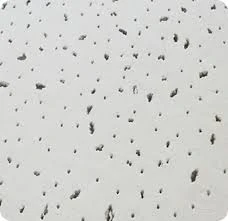8 月 . 28, 2024 07:29 Back to list
Professional Drywall Grid Systems for Optimal Interior Solutions
Understanding Drywall Grid Systems A Comprehensive Guide
In the realm of modern construction and interior design, drywall grid systems have emerged as pivotal elements in creating functional and aesthetically pleasing spaces. A drywall grid, often associated with suspended ceilings and wall partitions, provides structural support while offering flexible design options. This article will delve into the intricacies of drywall grid systems, exploring their components, installation processes, and advantages.
What is a Drywall Grid?
A drywall grid refers to a framework used to support drywall panels, particularly in ceilings and complex wall structures. This grid system is generally made of metal or lightweight materials, forming a grid-like structure that allows drywall sheets to be mounted securely. This framework is crucial for ensuring that the drywall remains stable and can accommodate various design features, such as lighting fixtures and ventilation systems.
Components of a Drywall Grid
The primary components of a drywall grid include
1. Main Runner The heavy-duty metal channels that run the length of the ceiling. Main runners are essential for distributing weight and provide the backbone of the grid system.
2. Cross Tee These shorter sections connect the main runners, forming a grid. They are essential for creating the support structure for the drywall panels.
3. Wall Angle This L-shaped metal piece is mounted where the ceiling meets the wall, providing a clean edge for finishing the installation.
4. Hangers These support the main runners and attach to the structural ceiling above, ensuring stability and proper alignment.
5. Drywall Panels Once the grid is in place, drywall sheets are attached to this framework, creating a smooth and finished surface.
Installation Process
Installing a drywall grid requires precision and careful planning. Here’s a general overview of the steps involved
drywall grid

1. Planning and Measurement Begin by determining the layout of the grid system. Accurate measurements ensure that the grid fits perfectly within the desired space.
2. Installing Wall Angles Mount wall angles along the perimeter of the room at the desired height.
3. Placing Main Runners Install the main runners parallel to the longest wall, spaced at intervals according to the type of grid being used.
4. Adding Cross Tees Insert cross tees at specified intervals to create the grid framework.
5. Securing the Structure Once the grid is assembled, secure it using hangers to the existing ceiling.
6. Mounting Drywall Panels Finally, attach drywall panels to the grid, ensuring all edges are properly aligned and secured.
Advantages of Using Drywall Grids
Utilizing drywall grid systems offers several benefits
- Flexibility in Design The grid allows for various architectural features, enabling designers to create intricate ceiling designs.
- Accessibility Suspended ceilings can house plumbing, electrical, and HVAC systems, making maintenance easy without the need to dismantle the entire ceiling.
- Improved Acoustics Drywall grid systems can enhance sound insulation, making them ideal for commercial spaces or homes requiring privacy.
- Aesthetics With a range of finishes available, drywall grids can significantly enhance the overall look of a room.
In conclusion, drywall grid systems represent an essential aspect of contemporary building design, combining functionality with aesthetic appeal. Whether for residential homes or commercial buildings, understanding and effectively implementing drywall grids can lead to better design outcomes and improved usability of spaces.
-
Revolutionizing Interior Design with Ceilings t grid Suspended SystemNewsOct.29,2024
-
Revolutionizing Ceiling Design with ceiling access panel with Gypsum Tile WaterproofNewsOct.29,2024
-
Revolutionizing Interior Design with PVC Gypsum Ceiling: A Comprehensive GuideNewsOct.29,2024
-
Elevating Interior Design with High quality Mineral Fiber Ceiling TilesNewsOct.29,2024
-
Revolutionizing Interior Design with PVC Gypsum Ceiling: A Comprehensive GuideNewsOct.29,2024
-
Elevating Interior Design with High-Quality Mineral Fiber Ceiling Tiles: A Comprehensive GuideNewsOct.29,2024







